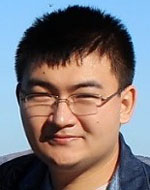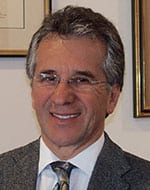Date: Tuesday, 16 April 2019
Time: 11:00-18:30
Room: C1062
Track Description
At present, pollution, congestion and traffic related problems are becoming major societal problems globally. Consequently, new automotive solutions and more suitable transportation modes are urgently required in order to provide various benefits for citizens and road users living better in the cities, including enhanced traffic safety, reduced pollution and emissions, and better utilization of road networks and emergency social resources. Along this line, many innovations and technologies have been invented for making vehicles electric, connected, shared and autonomous in the new context of modern intelligent transportation systems.
One of the core ideas to make intelligent transportation systems work effectively is to deploy advanced communication, coordination and many IoT enabling technologies among vehicles, road infrastructure, as well as the cloud in a flexible and integrated environment. By adopting IoT, useful information from vehicles, drivers and vulnerable road users, e.g. pedestrians and cyclists, can be collected, processed and shared in an effective, secure and timely manner, making the overall transportation system more efficient and reliable. At this point, many new vehicular applications have been developed and implemented using the IoT based solution architecture, which heavily leverages novel algorithms, including machine and deep learning methods, loud/edge computing capabilities, and real-time V2X communication technologies.
Examples include, but not limited to:
- Smart parking system
- Remote vehicle diagnostic system
- E-Call system
- Collision prediction and avoidance system
- Driving monitoring system (e.g. detecting driver fatigue and awareness)
The WF-IoT 2019 track on Automotive and Transportation System will explore the potential of IoT enabling technologies for real world automotive and transportation applications from both a global and Irish perspective. The session will mainly focus on the following topics:
- IoT enabled congestion, pollution and emission control
- IoT based monitoring and safety for vulnerable road users
- IoT technologies for enhanced driving experience
- Green transportation and E-Mobility
- Connected and autonomous vehicles in intelligent transportation
Schedule
11:00-13:00 Session 1, Connected and Autonomous Vehicles
Talk 1 “Connected Autonomous Vehicles – Enabling the Digital Transformation of Ireland”, John Cormican, Jaguar Land Rover Vehicle Engineering, Shannon, Ireland
Talk 2 “Connected and Autonomous Vehicles – Behind the Sensors”, Edward Jones, National University of Ireland, Galway, Ireland
Talk 3 “Sensors for Autonomous Vehicles and Automotive Driver Assistance Systems”, Mike Keaveney, Analog Devices, Limerick, Ireland
Moderated Panel and Audience Discussion
13:00-14:00 Lunch
14:00-16:00 Session 2, Sensors and Sensor Systems for Vehicles
Talk 4 “In-Cabin Driver Monitoring and Gesture Recognition Enabled by 145GHz Radar”, Kathleen Philips, IMEC, Eindhoven, The Netherland
Talk 5 “Optical Sensing and LIDAR for Automotive and IoT Applications”, Nim Cheung, AIphotonics Ltd., Hong Kong
Panel Discussion
16:00-16:30 Coffee Break
16:30-18:30 Session 3, Analytics and Computing for the Automotive Industry
Talk 6 “Fog, Robotics, and the Future of the Automotive Industry”, Flavio Bonomi, Nebiollo Technologies, Milpitas, CA USA
Talk 7 “Connected Vehicles – Analytics and Applications”, Emanuele Crisostomi, University of Pisa, Pisa, Italy
Panel Discussion, Wrap-up and Summary
Track Co-Chairs
Javier Gozalvez, Universidad Miguel Hernandez de Elche, Spain

Javier Gozalvez received an electronics engineering degree from the French Engineering School ENSEIRB (Bordeaux, France), and a PhD in mobile communications from the University of Strathclyde, Glasgow, U.K. He has been with Universidad Miguel Hernández de Elche (UMH), Spain since October 2002, where he is currently an Associate Professor and served as Deputy Vice-Rector for International Relations (2011-2015). He is the Director of the UWICORElaboratory at UMH where he leads research activities in the areas of vehicular networks, device-centric wireless networks, heterogeneous wireless networks, and wireless industrial communications. He received the best research paper award from the Journal of Network and Computer Applications, the young researcher award from UMH, as well as several paper awards at international and national conferences.
He is an elected member to the Board of Governors (2011-2017) of the IEEE Vehicular Technology Society, and has been elected President of the IEEE Vehicular Technology Society for 2016. He is a Distinguished Speaker for the IEEEVehicular Technology Society, and previously served as Distinguished Lecturer (2011-2015). He is also the Chair for the IEEE Connected Vehicles Initiative funded by VTS. He currently serves as Mobile Radio Senior Editor of IEEEVehicular Technology Magazine and on the Editorial Board of the Computer Networks journal. He was previously Associate Editor of the IEEE Communications Letters. He was the General Co-Chair for the IEEE VTC-Spring 2015 conference in Glasgow (UK), and General Co-Chair of the ACM VANET 2013, ACM VANET 2012, URSI’s national conference in 2012, and 3rd ISWCS 2006. He also was TPC Co-Chair for 2011 IEEE VTC-Fall and 2009 IEEE VTC-Spring. He was the founder and General Co-Chair of the IEEE International Symposium on Wireless Vehicular communications (WiVeC) in its 2007, 2008, and 2010 editions.
Mingming Liu, IBM Ireland Lab – Innovation Exchange

Dr Mingming Liu is a data scientist within Innovation Exchange, IBM Ireland. He has many years of experience in machine learning, data science, centralized & distributed control and optimization theories with strong links to electric, hybrid vehicles and IoT in the context of smart grids, intelligent transportation systems and smart cities. Prior to IBM, he was employed as a postdoctoral researcher then a senior postdoctoral researcher with the control and decision science research group at University College Dublin, Ireland, where he spent almost three years working on both EU and SFI funded projects, including Green Transportation and Networks (SFI) and Enable-S3 (H2020). He is currently involved in several EU H2020 funded projects at IBM, and his works mainly focus on leveraging the state-of-the-art machine learning, deep learning techniques, as well as advanced control & optimization solutions for practical and challenging problems arising in the industry.
Mingming received his B.Eng. degree with first class honours from the Dept. of Electronic Engineering at the National University of Ireland Maynooth in 2011, and then the PhD degree in Applied Mathematics from the Hamilton Institute at the Maynooth university in 2015 with his thesis entitled “Topics in Electromobility and Related Applications”. He is an IEEE member and an active reviewer in the fields. He has published over 20 papers to date, including top-tier journals such as “IEEE Transactions on Smart Grid”, “IEEE Transactions on Intelligent Transportation System”, “IEEE Transactions on Automation Science and Engineering”, and “Automatica”.
Diarmuid McSwiney, Teagasc

Diarmuid leads the Industrial IoT Solutions Group in Analog Devices. Based in the Analog Devices European R&D Centre in Ireland, Diarmuid and his team are responsible for creating and executing ADI’s strategy focusing on digitising commercial buildings and infrastructure. Diarmuid started his career in Motorola and Freescale before moving to start-ups developing technology for cellular infrastructure and handset manufacturers. Diarmuid holds an MSc in Electronic Engineering from University College Cork, Ireland.
Track Speakers
Flavio Bonomi
 Flavio Bonomi is the founder and the Chief Technology Officer at Nebbiolo Technologies, a startup active in the domain of the Internet of Things, with particular focus on Industrial Automation.
Flavio Bonomi is the founder and the Chief Technology Officer at Nebbiolo Technologies, a startup active in the domain of the Internet of Things, with particular focus on Industrial Automation.
Previously, Flavio was a Cisco Fellow, Vice President, and the Head of the Advanced Architecture and Research Organization at Cisco Systems, in San Jose, California.
At Cisco, Flavio was co-leading the vision and technology direction for Cisco’s Internet of Things initiative.
Before joining Cisco in 1999, Flavio Bonomi was at AT&T Bell Labs from 1985 and 1995, with architecure and research responsibilities, mosty relating to the evolution of the ATM technology, and then was Principal Architect at two Silicon Valley startups, ZeitNet and Stratum One.
He received an Electrical Engineering degree from Pavia University in Italy, and the Master’s and PhD in Electrical Engineering degrees in 1981 and 1985, respectively, from Cornell University in Ithaca, New York.
Talk Title: Fog Robotics and the Future of the Automotive Industry
The success of the Industrial Internet of Things will be predicated, to a large extent, on the evolution and deployment of a distributed computing, storage and services platform, supporting and enabling multiple vertical applications and use cases. This platform of orchestrated resources will manifest as Cloud, Fog, or Edge, and Endpoint resources.
This modern infrastructure will progressively bridge the Information Technologies (IT) and the Industrial Operational (OT) domains, thus enabling a new breed of applications and services, while securing, managing and consolidating the current deployed base of applications.
In this talk, we will focus on the impact of the Fog, or Edge Computing Paradigm on the Automotive sector, with emphasis on two main perspectives, evolving according to similar architectures: Automotive Robotics Manufacturing, as well as the future internal Automotive Architecture.
We will discuss the critical roles played in this powerful technology evolution by deterministic networking and computing, virtualization, data and application management, and analytics.
Nim Cheung

Dr. Nim Cheung is Managing Director of AIphotonics Limited, a start-up company in Hong Kong Science Park specialized in 3D photography, LIDAR, and artificial intelligence. He was formerly Chief Executive Officer of the Hong Kong Applied Science and Technology Research Institute (ASTRI), a 600-member R&D organization in the information and communications area established by the Hong Kong SAR Government. Prior to joining ASTRI, Dr. Cheung has held different research and senior management positions at AT&T Bell Labs, Bellcore, and Telcordia Technologies. He is a Telcordia Fellow and a Fellow of IEEE. Dr. Cheung served as the 18th President of the IEEE Communications Society, a global professional organization with 45,000 members in 180 chapters around the world. He was Editor-in-Chief of the IEEE Communications Magazine, and was appointed Chairman of the IEEE Fellow Committee in 2012-13.
Dr. Cheung is an Honorary Professor of the Chinese University of Hong Kong, and has served as Consulting Professor at Stanford University from 2004 to 2009. He was a Council Member of the Hong Kong Research Grants Council from 2009 to 2015, and received the University of Hong Kong Distinguished Alumni Award in 2010. Dr. Cheung obtained his B.Sc. degree from the University of Hong Kong, and M.S. and Ph.D. degrees from the California Institute of Technology.
Talk Title: Optical Sensing and LIDAR for Automobile and IoT Applications
Light Detection and Ranging (LIDAR) is a remote sensing technique that uses the time or phase of an optical pulse to measure the range and/or velocity of an object. The difference in return time and phase of the optical pulses can then be used to construct the digital 3D representation of the scanned object. LIDAR is increasingly used in creating the “digital twin” of an object and found widespread applications in autonomous vehicles and Internet of Things. This talk provides a survey of the principles of different light sensing techniques, as well as major scanning and detection mechanisms used by present day commercial LIDARs. Examples of leading brands of LIDARs used in autonomous vehicles and IoT applications, and how the collected point clouds are used to create 3D models and digital twins will be discussed.
John Cormican
John Cormican is the General Manager of Jaguar Land Rover Ireland Vehicle Engineering, which he co-founded in May 2017. Based in Shannon, John and his team play an important role in realising the company’s vision for Autonomous, Connected, Electrified vehicles and Shared Mobility services. Having started his career as a Software Engineer in Piercom and Tellabs, John moved to Intel where he held a number of roles over a 15 year period. Prior to his role with Jaguar Land Rover, John was a Senior Business Development Manager at Intel for over ten years and was responsible for automotive business development strategy in EMEA. John is a graduate of University of Limerick and obtained a BSc in Applied Mathematics and Computer Engineering.
Talk Title: Connected Autonomous Vehicles – Enabling the Digital Transformation of Ireland
Development Strategy for Connected Autonomous Vehicles (CAV):
- Discussion around strategy to drive the digital transformation of Ireland through Connect Autonomous Vehicles and how this relates to global test-bed infrastructure projects, leveraging a thriving technology eco-system in the Ireland mid-west region. Ireland is already a world leader in software development, data centre infrastructure and communications infrastructure development. A CAV test-bed would enable and dramatically grow all these key industries in Ireland, it just happens to be that automotive is the trigger point to make this happen.
- This is the strategic intent of CAV Ireland, not about any one individual company or industry but a wider tech-industry initiative that demonstrates Ireland as a world leader in this area. Other key players include Cisco, General Motors, Analog Devices, IBM, Arup, Connect, Lero and others.
- Includes a discussion around regulation and legislation (or licences) to allow for autonomous vehicles on public road networks, with the right safety procedures in place. This is a global trend as the entire automotive industry moves in this direction. The presentation talks about a reduced series of specific roads in Limerick/Galway/Clare as a starting point which can scale nationally.
- The longer term vision is the development of a purpose built CAV proving ground (as part of a global collaborative network) where all invested tech companies, research bodies and universities/colleges can share in the opportunity to innovate for their relevant sector (e.g. data centre, communications/networking, education/research, software development, automotive, etc). The strategy is to align with other global test-bed projects (for example in Florida, Singapore and Hungary).
Emanuele Crisostomi
 Emanuele Crisostomi received the B.Sc. degree in computer science engineering, the M.Sc. degree in automatic control, and the Ph.D. degree in automatics, robotics, and bioengineering from the University of Pisa, Italy, in 2002, 2005, and 2009, respectively. He is currently an Associate Professor of Electrotechnics at the Department of Energy, Systems, Territory, and Constructions Engineering, University of Pisa. He has authored more than 80 papers published on international journals and conference proceedings, and he is the author of the recent book on connected cars and plug-in vehicles “Electric and Plug-in Hybrid Vehicle Networks: Optimization and Control, CRC Press, 2017”. He is currently completing an edited volume on Analytics for the Sharing Economy that will be published by Springer in 2019. His research interests include control and optimization of large-scale systems, with applications to smart grids and green mobility networks.
Emanuele Crisostomi received the B.Sc. degree in computer science engineering, the M.Sc. degree in automatic control, and the Ph.D. degree in automatics, robotics, and bioengineering from the University of Pisa, Italy, in 2002, 2005, and 2009, respectively. He is currently an Associate Professor of Electrotechnics at the Department of Energy, Systems, Territory, and Constructions Engineering, University of Pisa. He has authored more than 80 papers published on international journals and conference proceedings, and he is the author of the recent book on connected cars and plug-in vehicles “Electric and Plug-in Hybrid Vehicle Networks: Optimization and Control, CRC Press, 2017”. He is currently completing an edited volume on Analytics for the Sharing Economy that will be published by Springer in 2019. His research interests include control and optimization of large-scale systems, with applications to smart grids and green mobility networks.
Talk Title: Connected Vehicles: Analytics and Applications
The ability of connected vehicles to exchange relevant information is attracting a valuable interest from many industrial and academic researchers to enable an increasing number of applications of interest for the transportation community, some of which are still in their nascent stage. In this talk we shall review a number of applications that involve both conventional and new types of plug-in vehicles; also, we shall review applications that may affect and influence the behaviour of vehicles both when they are driving and when they are parked. Such applications include cooperative positioning algorithms, and switching between different driving modes to meet environmental power generation constraints.
In this context, it is interesting to notice that many traffic-related applications have been recently conveniently designed and formulated as optimization problems. The challenging aspects of such optimization problems is that they should be conveniently solved in a distributed fashion, with little communication requirements, and taking into account the limited actuation capabilities of the vehicles. In addition, the obtained solutions should be fair, within the population of drivers who have their own preferences and constraints. Recent advances in the development of distributed algorithms that have the previous properties will be presented and discussed.
Edward Jones
 Edward Jones is a Senior Lecturer in Electrical & Electronic Engineering at National University of Ireland, Galway, where he also served as Vice-Dean of the College of Engineering & Informatics from 2010-2016. He has a number of years of experience in senior R&D positions in industry, with both multinational and start-up companies. He has also been a visiting researcher at Columbia University, USA, and the University of New South Wales, Australia. His research interests are in the development and application of signal processing and related techniques in the fields of connected and autonomous vehicles, and biomedical engineering. He is a researcher in Lero, the Irish Software Research Centre, and co-directs the Connaught Automotive Research (CAR) Group at NUI Galway.
Edward Jones is a Senior Lecturer in Electrical & Electronic Engineering at National University of Ireland, Galway, where he also served as Vice-Dean of the College of Engineering & Informatics from 2010-2016. He has a number of years of experience in senior R&D positions in industry, with both multinational and start-up companies. He has also been a visiting researcher at Columbia University, USA, and the University of New South Wales, Australia. His research interests are in the development and application of signal processing and related techniques in the fields of connected and autonomous vehicles, and biomedical engineering. He is a researcher in Lero, the Irish Software Research Centre, and co-directs the Connaught Automotive Research (CAR) Group at NUI Galway.
Talk Title: Connected and Autonomous Vehicles: Behind the Sensors
Connected and Autonomous Vehicles (CAV) are attracting much interest and development, driven by technological, societal and regulatory change, new business models, and ubiquitous connectivity. This is influencing personal mobility through e.g. passenger vehicles, as well as other markets such as industrial automation and logistics. A critical component in the development of CAV technology is the need for such systems to accurately sense and understand their environments. This requires a range of sensors that provide large quantities of data and associated complex algorithms, often implemented using embedded software, to extract useful information from these data for use by the vehicle to drive its actions. For example, an autonomous or semi-autonomous car must examine its environment to detect other vehicles, infrastructure and vulnerable road users such as pedestrians and cyclists, and uses this information to take action to e.g. avoid a pedestrian. While many advances have been made in sensors, signal processing and machine learning, challenges remain to be solved. Technological challenges include ensuring perception is robust in difficult conditions such as inclement weather and complex road environments, while societal challenges include the need to support reliability and transparency to foster trust and acceptance of the technology. This presentation will examine some of the issues involved, how signal processing and related technology is contributing to addressing some of these concerns, and what technical challenges remain.
Mike Keaveney
 Mike Keaveney is the Technology Director for the Autonomous Transport & Safety Business Unit at Analog Devices Inc. (ADI), based in Limerick, Ireland. He is also an Analog Devices Fellow.
Mike Keaveney is the Technology Director for the Autonomous Transport & Safety Business Unit at Analog Devices Inc. (ADI), based in Limerick, Ireland. He is also an Analog Devices Fellow.
In his role as technology director, he has responsibility for technology roadmap and product architecture definition for ADI’s solutions for autonomous transport and automotive driver assistance systems (ADAS). This includes Radar, Lidar and IMU sensor technology, sensor fusion and machine learning strategy for the Business Unit.
Prior to this, Mike was an Engineering Director at Analog Devices and led an engineering team that developed RF & Microwave integrated circuits for cellular communications infrastructure equipment as well as radars for industrial and automotive applications. He has numerous IEEE and IET publications, holds 19 U.S. patents, has served on the RF Technical Program Committee of the International Solid State Circuits Conference (ISSCC) from 2009 to 2014 and is currently serving on TPC for the European Solid States Circuits conference (ESSCIRC).
Mike Keaveney received the B.E. degree in electrical engineering from University College Dublin (UCD), Dublin, Ireland, in 1986, and the M.Eng. Degree in computer systems from the University of Limerick, Limerick, Ireland, in 1992.
Kathleen Philips
Dr. Kathleen Philips is a director at imec, The Netherlands, leading R&D programs on next-generation IoT technologies for Cognitive Sensing. The research includes roadmaps on state-of-the-art IC design for RF-sensing and radar, as well as design of new electro-chemical sensors for environmental monitoring, all the way to analytics, AI and neuromorphic chip design. She is responsible for the roadmap definition, the multi-site and multi-region implementation, as well as the business aspects of the Cognitive Sensing R&D programs.
Kathleen has joined imec in 2007 and has held positions as director IoT, program director for Perceptive Systems, program manager for ULP Wireless and as a principal scientist. Before that time, she was a research scientist at the Philips Research Labs for over 12 years. She holds a Ph. D in electrical engineering, has authored and co-authored over 80 papers and holds various patents.
Talk Title: In-Cabin Driver Monitoring and Gesture Recognition Enabled by 145GHz Radar
Next-generation driver assistance needs new technologies to support driver alertness, or driver monitoring. The driver monitoring system checks the driver’s level of vigilance via non-contact sensing. In this slot, we present the latest R&D on radar technology for in-cabin driver monitoring. The radar is used for non-contact and through-clothing detection of micro-skin movements like respiration, heart rate and heart rate variability. Additional use cases include detection of a baby-left-behind, or gesture recognition for non-contact dashboard control is presented.
It is a first-of-a-kind radar chip operating in the 145GHz unlicensed band, and supporting a bandwidth up to 10GHz. This results in an ultra-fine range resolution of 1.5cm, in combination with an unprecedented doppler resolution. The radar has an integrated antenna on the 28nm CMOS chip, relaxing the complexity of mm-wave product design, and, when integrated into a MIMO constellation, the total solution can be as small as a couple of square centimeters. In this talk, we will present the chip and algorithms in more detail and show results for non-contact vital signs detection and gesture recognition.
The chip dissipates 500mW in continuous mode, with the option of a low-power, duty-cycled FM transmission mode (for close ranges) enabled via fast powering built into the transceiver.




